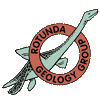Autumn Programme - 3 October 2019
Insights into the rates and nature of long-term erosion of the North Yorkshire coast from cosmogenic radionuclide exposure dating
Dr Swirad, Durham University
Predicted sea-level rise and increased storminess are believed to increase coastal erosion. However, it is difficult to anticipate the response of rocky coasts to a changing climate as the short-term monitoring datasets are difficult to extrapolate while the accuracy of existing models that predict long-term erosion is largely unknown. At present, cosmogenic radionuclide (CRN) exposure dating is the only method to directly reconstruct millennial-scale coastline evolution of the fully-erosional rocky coast environments. A CRN exposure dating was undertaken on a set of sandstone samples from the 300 m wide Hartle Loup shore platform (East Staithes, North Yorkshire). The results show that the cliff has been retreating at a near-constant time-averaged rate of 4.5 cm/yr which agrees with more contemporary decadal-scale monitoring data. The entire shore platform has been formed within the last 7 kyr, and is not an inherited feature form the last glacial maximum. The data show a steady and incremental pattern of retreat. Over long timescales the down-wearing of the shore platform has been proportional to the cliff retreat. The rate of back-wearing of steps across the foreshore is between 1-3 cm/yr.
Dr Swirad
Dr Swirad graduated from University of Wroclaw, Poland with MSc degree in Physical Geography. Her PhD (Department of Geography, Durham University) focused on monitoring mm- to m-scale erosion of shore platforms in North Yorkshire (Skinningrove to Sandsend with particular focus on East Staithes). She tried to link the short-term empirical data with the long-term landscape evolution (modelling and CRN exposure dating). Since the graduation Dr Swirad worked as oceanographer at the Polish Antarctic Station (King George Island, South Shetlands) and a few months ago re-joined Department of Geography at Durham to look at the land-sliding in Nepal.
